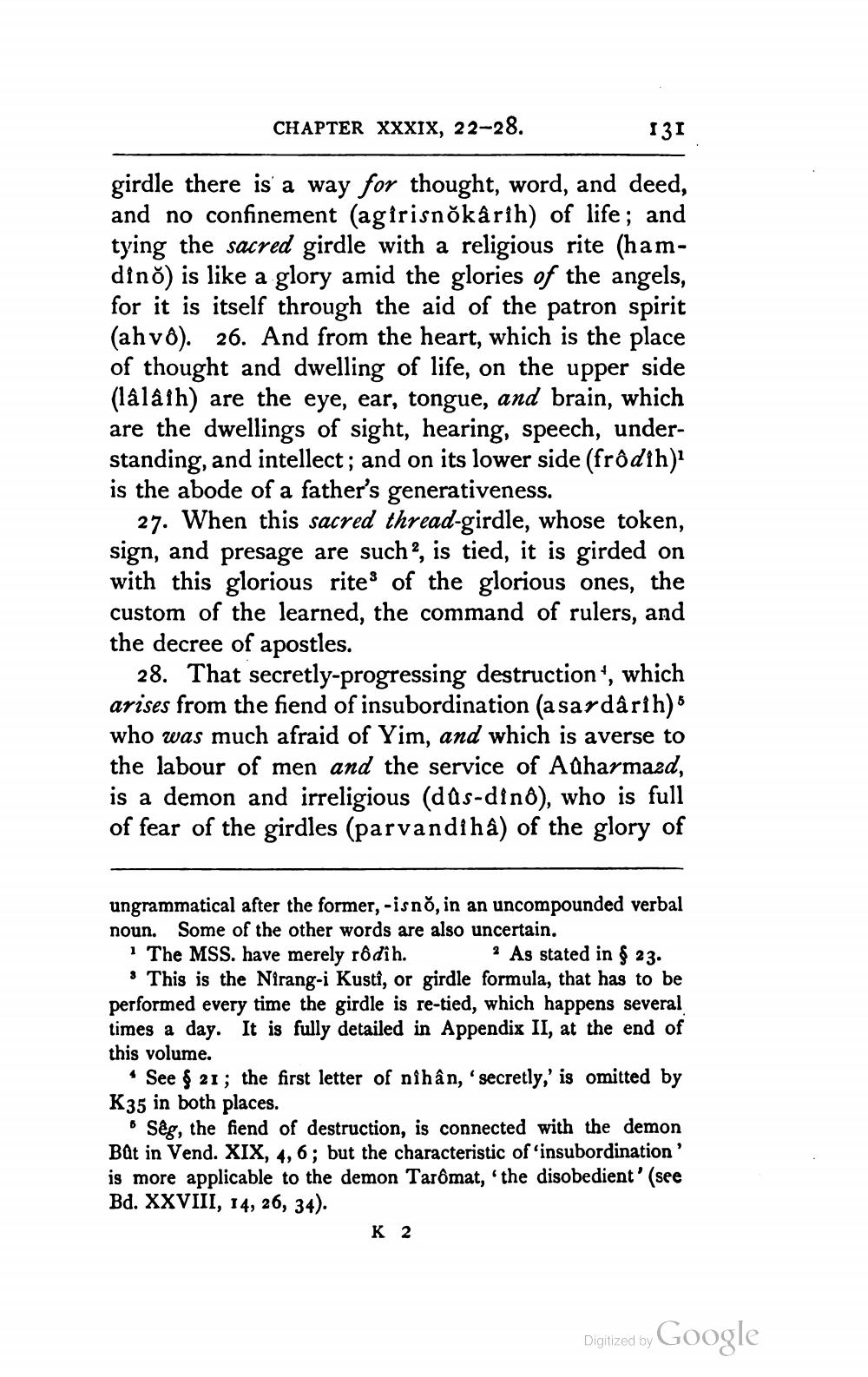________________
CHAPTER XXXIX, 22-28.
131
girdle there is a way for thought, word, and deed, and no confinement (agirisnõkârih) of life; and tying the sacred girdle with a religious rite (hamdino) is like a glory amid the glories of the angels, for it is itself through the aid of the patron spirit (ahvo). 26. And from the heart, which is the place of thought and dwelling of life, on the upper side (lâlâih) are the eye, ear, tongue, and brain, which are the dwellings of sight, hearing, speech, understanding, and intellect; and on its lower side (frôdih) is the abode of a father's generativeness.
27. When this sacred thread-girdle, whose token, sign, and presage are such?, is tied, it is girded on with this glorious rites of the glorious ones, the custom of the learned, the command of rulers, and the decree of apostles.
28. That secretly-progressing destruction', which arises from the fiend of insubordination (a sardârih) who was much afraid of Yim, and which is averse to the labour of men and the service of Adharmazd, is a demon and irreligious (das-dino), who is full of fear of the girdles (parvandi hâ) of the glory of
ungrammatical after the former, -isno, in an uncompounded verbal noun. Some of the other words are also uncertain. 1 The MSS. have merely rôdih.
? As stated in $ 23. • This is the Nirang-i Kusti, or girdle formula, that has to be performed every time the girdle is re-tied, which happens several times a day. It is fully detailed in Appendix II, at the end of this volume.
• See $ 21; the first letter of nihân, 'secretly,' is omitted by K35 in both places.
Sêg, the fiend of destruction, is connected with the demon Båt in Vend. XIX, 4, 6; but the characteristic of 'insubordination is more applicable to the demon Tarômat, the disobedient' (see Bd. XXVIII, 14, 26, 34).
K 2
Digitized by Google




